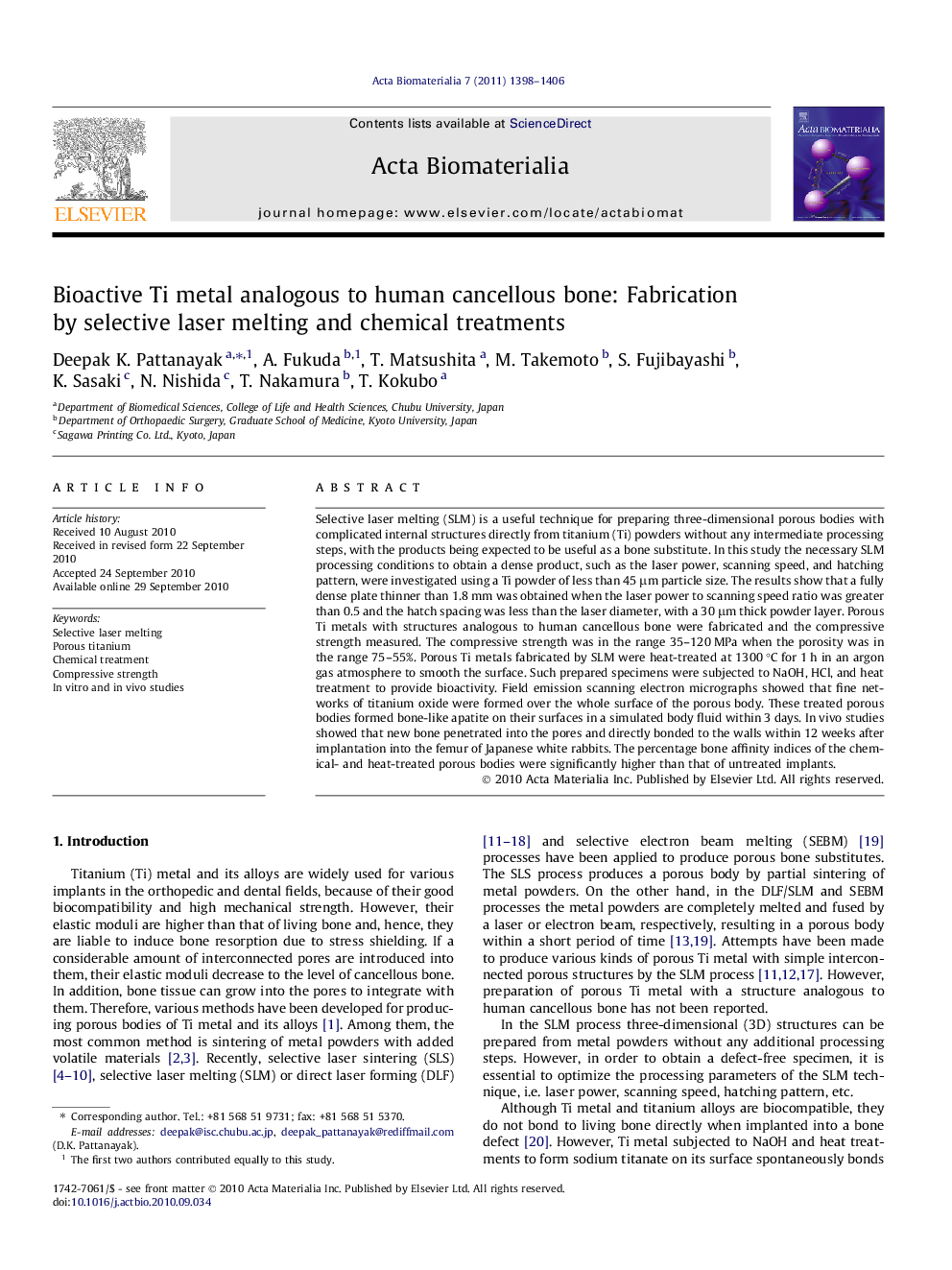| Article ID | Journal | Published Year | Pages | File Type |
|---|---|---|---|---|
| 10160232 | Acta Biomaterialia | 2011 | 9 Pages |
Abstract
Selective laser melting (SLM) is a useful technique for preparing three-dimensional porous bodies with complicated internal structures directly from titanium (Ti) powders without any intermediate processing steps, with the products being expected to be useful as a bone substitute. In this study the necessary SLM processing conditions to obtain a dense product, such as the laser power, scanning speed, and hatching pattern, were investigated using a Ti powder of less than 45 μm particle size. The results show that a fully dense plate thinner than 1.8 mm was obtained when the laser power to scanning speed ratio was greater than 0.5 and the hatch spacing was less than the laser diameter, with a 30 μm thick powder layer. Porous Ti metals with structures analogous to human cancellous bone were fabricated and the compressive strength measured. The compressive strength was in the range 35-120 MPa when the porosity was in the range 75-55%. Porous Ti metals fabricated by SLM were heat-treated at 1300 °C for 1 h in an argon gas atmosphere to smooth the surface. Such prepared specimens were subjected to NaOH, HCl, and heat treatment to provide bioactivity. Field emission scanning electron micrographs showed that fine networks of titanium oxide were formed over the whole surface of the porous body. These treated porous bodies formed bone-like apatite on their surfaces in a simulated body fluid within 3 days. In vivo studies showed that new bone penetrated into the pores and directly bonded to the walls within 12 weeks after implantation into the femur of Japanese white rabbits. The percentage bone affinity indices of the chemical- and heat-treated porous bodies were significantly higher than that of untreated implants.
Keywords
Related Topics
Physical Sciences and Engineering
Chemical Engineering
Bioengineering
Authors
Deepak K. Pattanayak, A. Fukuda, T. Matsushita, M. Takemoto, S. Fujibayashi, K. Sasaki, N. Nishida, T. Nakamura, T. Kokubo,
